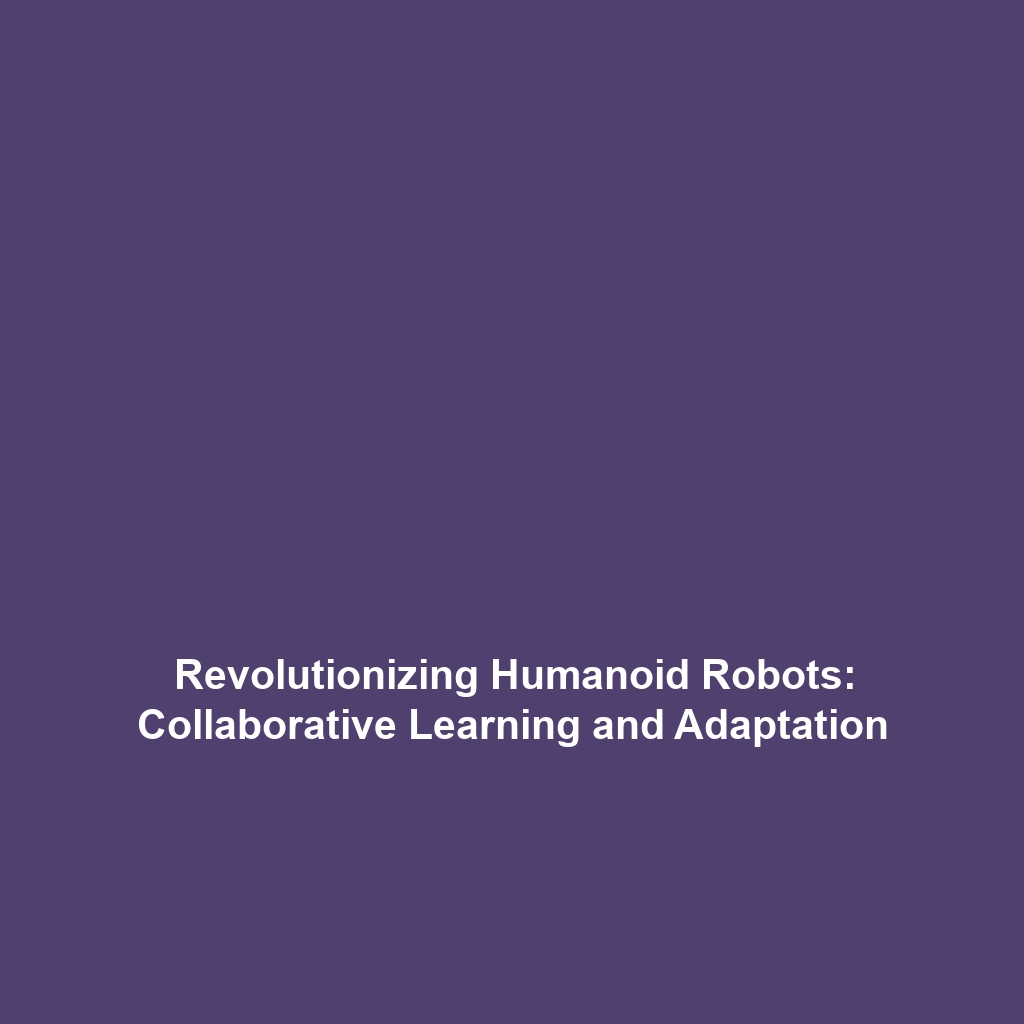Examples of Humanoid Robots Using NLP for Conversation and Task Instructions
Introduction
Humanoid robots have emerged as a fascinating domain within robotics, enabling machines to interact with humans more naturally and intuitively. Utilizing natural language processing (NLP), these robots can understand and generate human language, enhancing their ability to engage in meaningful conversations and execute task instructions. This capability is significant in various sectors including education, healthcare, and customer service, where effective communication is pivotal. This article delves into examples of humanoid robots empowered by NLP and explores their impact on human-robot interaction.
Key Concepts of Humanoid Robots and NLP
To understand the advancements in humanoid robots using NLP for conversation and tasks, it’s essential to grasp a few core concepts:
Natural Language Processing (NLP)
NLP refers to the intersection of linguistics, computer science, and artificial intelligence, enabling machines to process and understand human language. In the context of humanoid robots, NLP is crucial for enhancing communication capabilities.
Humanoid Robot Design
The design of humanoid robots aims to mimic human appearance and behavior, promoting acceptance and usability in social settings. Integrating NLP allows these robots to perform tasks through voice commands, making them more effective personal assistants.
Applications and Real-World Uses
The integration of NLP into humanoid robots has led to numerous practical applications:
- Education: Robots like NAO and Pepper are used to teach languages and mathematics through interactive conversations, enhancing student engagement.
- Healthcare: Humanoid robots assist in mental health therapy by providing companionship and executing task instructions for patients with cognitive impairments.
- Customer Service: Robots like Robi serve in customer-facing roles, addressing queries and guiding customers through processes using conversational NLP.
Current Challenges
Despite their advancements, several challenges hinder the effective deployment of humanoid robots utilizing NLP:
- Language Nuances: Understanding the complexities and subtleties of human language remains a significant hurdle.
- Cultural Context: Tailoring responses based on cultural backgrounds complicates interaction accuracy.
- Emotional Recognition: Improving the robots’ ability to recognize and respond to human emotions is essential for effective communication.
Future Research and Innovations
The future of humanoid robots using NLP is ripe with potential innovations:
- Enhanced Machine Learning: Continuous growth in machine learning algorithms is expected to improve language comprehension and contextual awareness.
- Multi-Modal Interaction: Future robots may incorporate visual and auditory cues, allowing them to interact more naturally.
- Personalization: Customizing responses based on user interactions and preferences can enhance relational dynamics between humans and robots.
Conclusion
Examples of humanoid robots using NLP for conversation and task instructions highlight a transformative shift in how machines can assist and engage with humans. As technological advancements continue, the integration of NLP in humanoid robots will not only improve user experience but also pave the way for broader acceptance of robots in daily life. For further insights into the evolution of humanoid robots, explore our articles on robot design and AI innovations in robotics.









